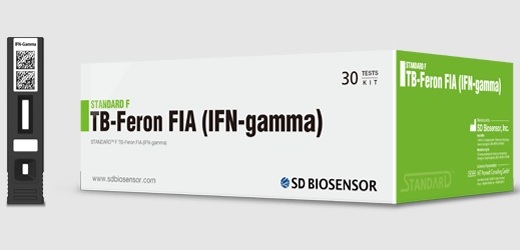Device Simplifies Identification of Leishmania Hosts
By LabMedica International staff writers
Posted on 22 May 2017
Researchers have developed a novel device for obtaining essentially painless, minimally invasive microbiopsies (MBs) that mimic sand fly bites and meals, providing a convenient sampling method for identifying asymptomatic, potentially infectious carriers of Leishmania donovani in endemic areas.Posted on 22 May 2017
Leishmania donovani species, parasites that cause visceral leishmaniasis (VL), are transmitted to humans by phlebotomine sandflies infected from a blood (+skin) meal taken upon biting an infected reservoir host animal – mainly humans (India and East Africa) or dogs (Latin America, Europe, Middle East, and North Africa). The majority of infected individuals remains asymptomatic, but serve as parasite reservoirs for transmission of the disease via sandflies. The gold standard for assessing infectiousness of human hosts to biting vector insects is xenodiagnosis – scoring infection rates among insectary-reared insects that had fed on humans suspected of being infected. However, when it comes to sandflies and leishmaniasis, xenodiagnosis is an intricate operation burdened by logistical hurdles and ethical concerns that prevent its effective application for population screening.

Image: An illustration of one of two minimally invasive microbiopsy devices designed to simultaneously sample a person’s blood and skin in a way that mimics the mode of biting by which the sandflies acquire meals (Photo courtesy of the International Journal for Parasitology).
An international research team from Australia, Ethiopia, Israel, and USA, led by Alon Warburg, professor at Hebrew University Hadassah Medical School, has developed and tested minimally invasive microbiopsy (MB) devices designed to penetrate the skin to a depth of ∼200µm and absorb blood as well as skin cell lysates, mimicking the “pool-feeding” mode by which the sandflies acquire blood meals.
Using the devices, MBs taken from 137 of 262 volunteers in endemic VL foci in Ethiopia detected Leishmania parasites that could potentially be imbibed by sandflies upon feeding. Although the volume of MB samples was 10-fold smaller than finger-prick blood samples, Leishmania DNA detection rates from MBs were significantly higher, implying that skin, more often than blood, was the main source of parasites.
Volunteers with histories of VL were almost as likely as healthy volunteers to test positive by MBs, suggesting the importance of asymptomatic people as reservoir hosts. These MB devices could enable to reliably and efficiently assess both L. donovani infection rates among large numbers of asymptomatic carriers and their infectiousness to blood-feeding sandflies.
The study, by Kirstein OD et al, was published April 26, 2017, in the International Journal for Parasitology.




 assay.jpg)









